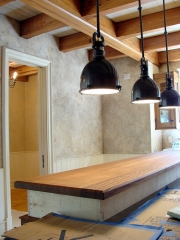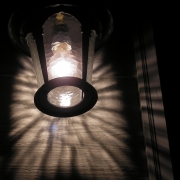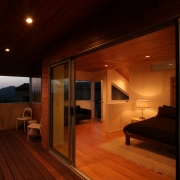- Error
{Re}habitat
Learn how adaptive reuse and upcycling can add hip design to your home, apartment, or yard with the Go Green channel's {Re}habitat series. Follow host Rachael Ranney as she shows you how to repurpose salvaged and found materials, adding fun and function to your space without breaking your budget.

In many historic homes, especially ones that date from the Victorian era, one of the most eye-catching design features is a stained glass window. These classic elements recapture the elegance and luxury of days gone by, but the beauty of stained glass is no longer restricted to older homes. Many manufacturers nationwide offer an extensive range of modern stained glass products to suit the needs of any homeowner.
The term “stained glass” actually refers to glass that has been painted and then fired; traditional works are constructed from pieces of cut glass that are set into lead channeling to form a pattern. Most of what we see today is really art glass, although some artisans still practice traditional methods.
The best alternative to plain painted surfaces used to be wallpaper. But wallpaper is difficult to remove, and installing it requires a lot of prep work, not to mention the time spent on precision measuring, cutting, and hanging. Faux painting can have an effect that is just as dramatic, but it isn’t as much of a commitment. And painting is one of the least expensive ways to customize a space.
In a recent survey conducted by the Foundation of the Fabricators and Manufacturers Association, 60% of the 1,000 people surveyed stated that they avoided installing light fixtures. Homeowners surveyed also avoided unclogging a drain and replacing a window pane, among other things. To see all of the projects homeowners avoided, read Survey Says: Homeowners Avoid Simple Repairs. Over the next few months, the At Home channel will provide how-to articles covering all projects on the list. Our main goal is to show how easy the repairs actually are and that homeowners can do the work themselves.
Three recessed ceiling light fixtures flood the fireplace in our family room. Sometime after we moved in, the dimmer switch that controls the lights stopped functioning properly. It turned the lights on and off, but did not dim them. We were not concerned with our inability to dim the lights and affect the mood of the room because the light bulbs' brightness at that time was not an issue. Recently, we started replacing our incandascent light bulbs with compact fluorescent light bulbs (CFL). The CFL bulbs we purchased have a higher lumen output than the incandescents, resulting in a brighter light. It was now time to solve our dimming problem.



